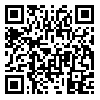Sat, Aug 16, 2025
| فارسی
Volume 12, Issue 2 (Summer 2010)
Advances in Cognitive Sciences 2010, 12(2): 15-28 |
Back to browse issues page
Download citation:
BibTeX | RIS | EndNote | Medlars | ProCite | Reference Manager | RefWorks
Send citation to:



BibTeX | RIS | EndNote | Medlars | ProCite | Reference Manager | RefWorks
Send citation to:
Ekhtiari H, Dezfoli A, Karamati M M, Safaie H, Looks K, Mokri A. Analysis of Behavior of Drug Addicts in Lowa Gambling Task Using Reinforcement Learning Model. Advances in Cognitive Sciences 2010; 12 (2) :15-28
URL: http://icssjournal.ir/article-1-90-en.html
URL: http://icssjournal.ir/article-1-90-en.html
Hamed Ekhtiari *1 
 , Amir Dezfoli2
, Amir Dezfoli2 
 , Mohammad Mehdi Karamati3
, Mohammad Mehdi Karamati3 
 , Houman Safaie1
, Houman Safaie1 
 , Karo Looks2
, Karo Looks2 
 , Azarakhsh Mokri1
, Azarakhsh Mokri1 


 , Amir Dezfoli2
, Amir Dezfoli2 
 , Mohammad Mehdi Karamati3
, Mohammad Mehdi Karamati3 
 , Houman Safaie1
, Houman Safaie1 
 , Karo Looks2
, Karo Looks2 
 , Azarakhsh Mokri1
, Azarakhsh Mokri1 

1- National Center for Addiction Studies, Tehran University of Medical Science, Tehran, Iran.
2- University of Electronic and Computer Science, Tehran University, Tehran, Iran.
3- School of Economics and Management, Sharif University, Tehran, Iran.
2- University of Electronic and Computer Science, Tehran University, Tehran, Iran.
3- School of Economics and Management, Sharif University, Tehran, Iran.
Abstract: (3650 Views)
Objective: The aim of this study was to assess decision making disorders in opioid dependents in riskful situations, using cognitive modeling.
Method: First, the decision making process of participants (treatment-seeking dependents and the normal group) was evaluated using the Farsi version of Iowa gambling task; and then the data were analyzed using cognitive modeling. Different models of decision making in riskful situations in the gambling task were designed based on reinforcement learning and gambling task circumstances. In the next step, the models were simulated in gambling task environment and were separately fitted on the data of both groups. Thereafter, the model with higher correspondence with the subject behavior in each group was determined.
Results: Both the group of treatment-seeking dependents (n=127) and the control group (n=130) showed a weak performance in the task (pure scores lower than 10). In addition, the performance of the dependent group was weaker than that of the normal group (p<0.07). Modeling results indicated that the optimum model in both groups was the model that was focused only on the frequency of reward and punishment (not on their size), in the assessment of different choices. Sensitivity revealing method revealed that the optimum model for the dependent group, in addition to merely focusing on the frequency of reward and punishment, is affected by harm-avoidance more than the control group.
Conclusion: The above-mentioned results indicate that the reason for the low scores obtained in both groups, is ignoring the size of reward and punishment and focusing on their frequency. Moreover, the reason for the lower output in the dependent group in comparison with the control group is a lack of balance between harm avoidance and reward dependence and a bias toward harm avoidance. The mentioned bias toward harm avoidance could be associated with the specific circumstances of treatment seeking drug dependents.
Method: First, the decision making process of participants (treatment-seeking dependents and the normal group) was evaluated using the Farsi version of Iowa gambling task; and then the data were analyzed using cognitive modeling. Different models of decision making in riskful situations in the gambling task were designed based on reinforcement learning and gambling task circumstances. In the next step, the models were simulated in gambling task environment and were separately fitted on the data of both groups. Thereafter, the model with higher correspondence with the subject behavior in each group was determined.
Results: Both the group of treatment-seeking dependents (n=127) and the control group (n=130) showed a weak performance in the task (pure scores lower than 10). In addition, the performance of the dependent group was weaker than that of the normal group (p<0.07). Modeling results indicated that the optimum model in both groups was the model that was focused only on the frequency of reward and punishment (not on their size), in the assessment of different choices. Sensitivity revealing method revealed that the optimum model for the dependent group, in addition to merely focusing on the frequency of reward and punishment, is affected by harm-avoidance more than the control group.
Conclusion: The above-mentioned results indicate that the reason for the low scores obtained in both groups, is ignoring the size of reward and punishment and focusing on their frequency. Moreover, the reason for the lower output in the dependent group in comparison with the control group is a lack of balance between harm avoidance and reward dependence and a bias toward harm avoidance. The mentioned bias toward harm avoidance could be associated with the specific circumstances of treatment seeking drug dependents.
Keywords: Reinforcement Learning, Gambling Task, Drug Dependence, Computational Modeling, Decision Making Process
Type of Study: Research |
Subject:
Special
Received: 2010/02/20 | Accepted: 2010/04/21 | Published: 2010/06/22
Received: 2010/02/20 | Accepted: 2010/04/21 | Published: 2010/06/22
Send email to the article author
| Rights and permissions | |
 |
This work is licensed under a Creative Commons Attribution-NonCommercial 4.0 International License. |

